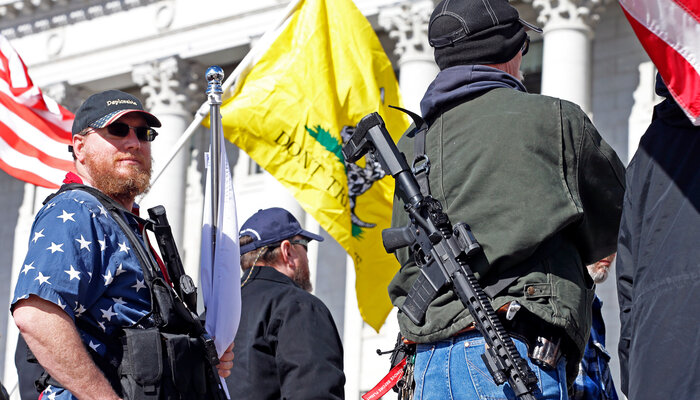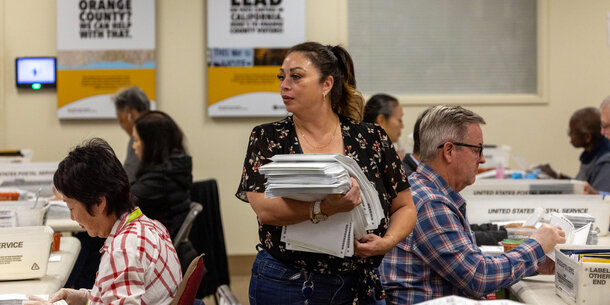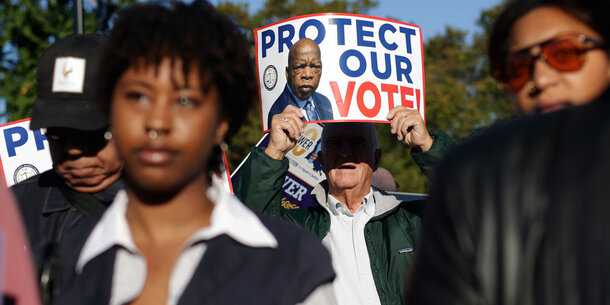This article first appeared in the Washington Post.
In oral arguments this month for one of the Supreme Court term’s most anticipated cases, Justice Samuel A. Alito Jr. posed a hypothetical question to an attorney defending a century-old New York law that forbids residents to carry a handgun in public unless they can demonstrate a heightened need to do so. He asked whether the justices would “be receptive” to the attorney’s arguments defending the restriction “if we were interpreting, let’s say, the First Amendment?”
Observers who have followed Second Amendment law could guess immediately what Alito was doing: He was alluding to the belief in conservative circles that the Second Amendment is widely treated as a “second-class” right, relative to others that liberals support. That persecution narrative is poised to transform the right to keep and bear arms.
Alito’s invocation of the Second Amendment as a “second-class” right didn’t arrive out of the blue. Within the courts, the argument originated in Alito’s own opinion in McDonald v. City of Chicago (2010). There he wrote that Chicago, by arguing that the Second Amendment should apply only as a limitation on federal, not state or local governments, was asking the Court to treat the right to keep and bear arms “as a second-class right, subject to an entirely different body of rules than the other Bill of Rights guarantees.” (The court found against Chicago, and Alito wrote the opinion.) Alito returned to this theme in a Federalist Society address last year, when he inveighed against what he viewed as the mistreatment of cultural conservatives by various institutions and, in the process, asserted that the Second Amendment is “the ultimate second-tier constitutional right in the minds of some.” By our count, more than a dozen briefs in the current gun-rights case, New York State Rifle and Pistol Association v. Bruen, invoke some version of the “second-class right” argument.
The allegations of widespread mistreatment are generally backed by no more than a case citation or two, perhaps because no strong empirical support exists for a broad trend of second-class treatment. More than 1,400 Second Amendment challenges have been decided since District of Columbia v. Heller, the landmark 2008 case in which the Supreme Court established an individual right to keep a handgun at home (but also emphasized that the right is subject to various forms of regulation). Our empirical analysis of the first eight years of post-Heller Second Amendment cases found that civil plaintiffs represented by an attorney — that is, people challenging gun restrictions — have a success rate of 40 percent in federal appellate courts. That figure hardly suggests that judges are turning their backs on pro-gun-rights arguments; it is in line with, or higher than, success rates in other constitutional contexts. (One researcher finds that landowners win in fewer than 10 percent of “takings” cases based on regulatory activity, for instance; another finds that plaintiffs prevail in 48 percent of Fourth Amendment claims raised in the civil context.) And many unsuccessful Second Amendment claims are objectively weak: About a quarter of the ones we examined challenged felon-in-possession laws, which were specifically blessed by Justice Antonin Scalia in his majority opinion in Heller.
Americans enjoy especially robust gun rights. That’s true in the courts as well as the legislatures. But the second-class claim nonetheless taps into a familiar story that gun rights advocates have told, one that involves overzealous gun grabbers seeking to stamp out gun culture and gun rights.
If a majority of the justices come to accept the second-class framing, despite its lack of support, they could use it to further expand the right to keep and bear arms, and thus further limit the ability of governments to regulate firearms — hardly the first time that an apparent rhetorical flourish ended up shaping constitutional law. (The “marketplace of ideas” metaphor, for example, has a powerful grip on First Amendment law and theory, even though, in the real world, false ideas regularly prevail over true ones.)
Given the prominence and potential influence of second-class rhetoric in the Second Amendment context, we set out, in a forthcoming law review article, to chart its development and influence. We traced how other judges picked up on, and sometimes embellished, Alito’s assertion in the 2010 case involving Chicago. Criticizing his colleagues’ reluctance to hear a Second Amendment challenge in 2018, for example, Justice Clarence Thomas characterized the amendment as a “constitutional orphan.” That same year, a judge on the Fifth Circuit Court of Appeals called the Second Amendment the “Rodney Dangerfield of the Bill of Rights” (quoting a legal scholar who was actually describing the right’s treatment before Heller was decided — when the claim might have been more plausible). Other judges, we found, describe it as “disfavored,” “watered-down,” “diluted,” “underenforced” or “abandoned.”
Two law professors, John Yoo and James C. Phillips, took the rhetoric up a notch in a National Review article, claiming that the Second Amendment has been “banished to the back of our constitutional bus.” The editorial page of the Wall Street Journal, similarly invoking the civil rights era, accused legislatures of engaging in “massive gun resistance.” The suggestion was that there has been a widespread and flagrant refusal to enforce gun rights analogous to opposition to desegregation after Brown v. Board of Education.
Claims like these have an unmistakable partisan appeal — and we found evidence of such partisanship within the federal courts. Ninety-five percent of the authors of judicial opinions invoking the “second-class” theme (20 of 21), over the period June 26, 2008 (when Heller was decided), to May 7, 2019, were appointed by Republican presidents. So were 94 percent (49 of 52) of the judges who signed on to such opinions.
Most of the commentary on Bruen has focused on questions of history, doctrine and social science. There are thoughtful, nonpartisan arguments on both sides. But the outcome of the case might end up being driven not by careful analysis but by resentment about the supposed disrespect of a right championed by conservatives. At a time when many observers have concluded that the court has become an overly ideological institution, that would be a deeply unfortunate development.
Joseph Blocher is the Lanty L. Smith ’67 professor of law and co-director of the Center for Firearms Law at Duke Law School.
Eric Ruben is assistant professor of law at Southern Methodist University’s Dedman School of Law and a fellow at the Brennan Center for Justice at NYU School of Law.



